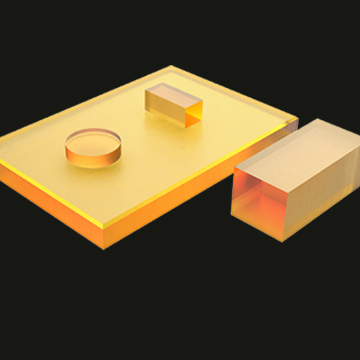The world of color is a captivating one, filled with a rich tapestry of hues and shades that evoke emotions, convey information, and add vibrancy to our lives. In imaging and display technologies, color filters play a pivotal role in capturing, enhancing, and manipulating these hues. In this article, we will take a deep dive into the fascinating realm of color filters, exploring their classifications and their essential role in the world of imaging and display technologies.
Understanding Color Filters
Types of Bandpass Filters are optical devices that selectively transmit, absorb, or reflect certain wavelengths of light while blocking others. They are composed of materials that interact with light in a way that allows only specific colors to pass through. This fundamental property forms the basis for their use in a wide range of applications.
Classification of Color Filters
Color filters are classified based on several criteria, including their transmission characteristics, design, and application. Here are some common types of color filters:
- Dichroic Filters: Dichroic filters are highly specialized filters that use interference effects to transmit specific wavelengths while reflecting or absorbing others. They are commonly used in applications such as photography, stage lighting, and optical instruments. Dichroic filters are known for their high spectral precision and are often used in multi-bandpass filter designs.
- RGB Filters: Red, Green, and Blue (RGB) filters are fundamental in the field of color imaging. These filters are designed to transmit only one primary color while blocking the others. By combining images captured through RGB filters, full-color images can be created, replicating the way humans perceive color.
- Bandpass Filters: Bandpass filters allow a specific range of wavelengths to pass through while blocking others. They are widely used in fluorescence microscopy, where they isolate specific emission wavelengths from fluorescent samples. Bandpass filters are crucial for distinguishing different fluorophores in biological imaging.
- Longpass and Shortpass Filters: Longpass filters transmit longer wavelengths (lower energy) and block shorter wavelengths (higher energy), while shortpass filters do the opposite. These filters are often used in applications where separation of colors or elimination of unwanted wavelengths is necessary.
- Neutral Density Filters: Neutral density filters are designed to reduce the intensity of light across the entire visible spectrum without affecting color. They are used in photography and cinematography to control exposure and achieve specific artistic effects.
Applications in Imaging and Display Technologies
Color filters are indispensable components in a multitude of applications:
- Digital Cameras: In digital cameras, color filters in front of image sensors help capture color information. Each pixel is equipped with RGB filters to capture red, green, or blue light, which are then combined to create full-color images.
- Displays: In displays, such as LCD screens, color filters are used to create vibrant and accurate colors. Each pixel is equipped with red, green, and blue subpixels, with color filters determining which color is displayed when light passes through.
- Photography: Color filters are commonly used in photography to enhance or modify the colors in a scene. For instance, a red filter can increase the contrast between blue skies and clouds, while a polarizing filter can reduce glare and enhance color saturation.
- Microscopy: In microscopy, color filters are essential for distinguishing different fluorescent labels and visualizing specific cellular structures or molecules. They enable researchers to study biological specimens with high specificity and precision.
- Entertainment: In the entertainment industry, color filters are used in stage lighting, film production, and visual effects to create dramatic lighting effects and achieve desired color aesthetics.
In conclusion, color filters are the unsung heroes behind the vivid and expressive world of color in imaging and display technologies. Their precise design and selective wavelength manipulation enable us to capture the beauty of the world and convey emotions through visuals. As technology continues to evolve, color filters will remain essential tools for enhancing our visual experiences and expanding the boundaries of what we can see and create.


